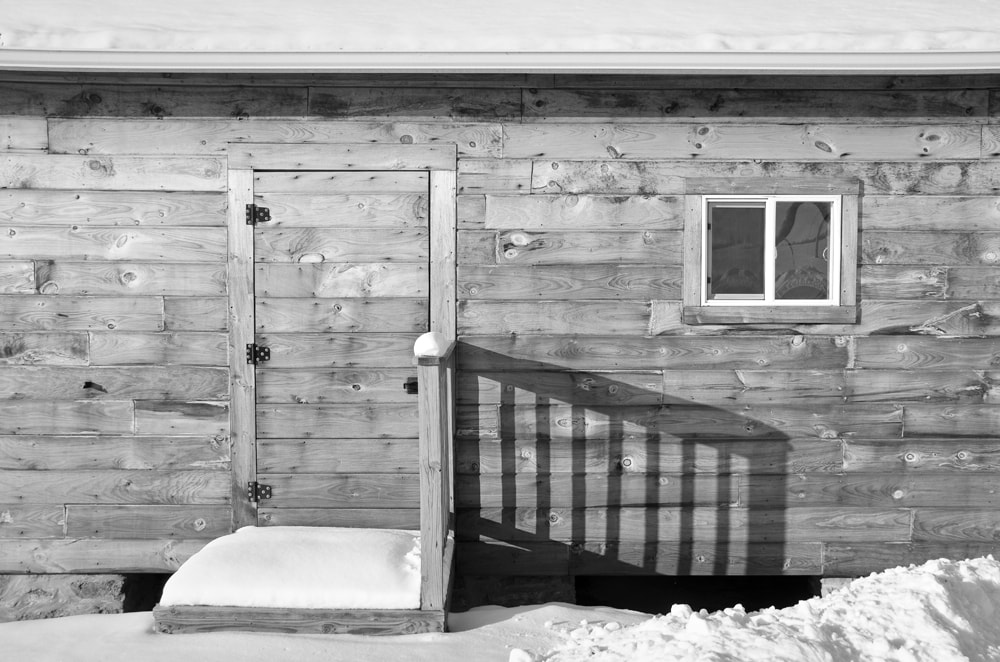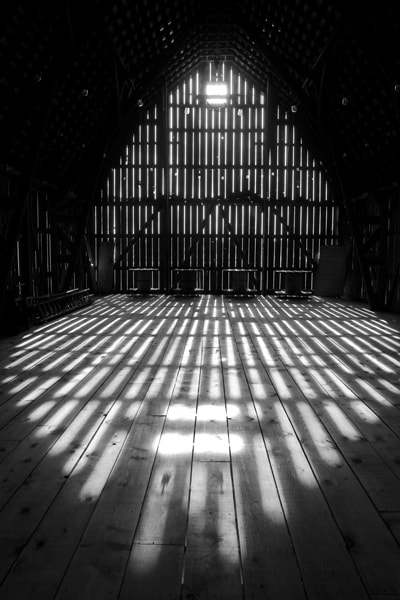|
Granny Granary, the place where we once stored our grain in three large bins (primarily oats, but wheat and barley in earlier years), stands next to busy County Road K, and not far from the old granary at my next door neighbors, the Kalscheuers. As cars zip by today, I often wonder if they understand and appreciate the importance and history of these old farm buildings.  Oats once filled our granary bins to the windows. Oats once filled our granary bins to the windows. Like many others before it, our granary sits atop stone columns to keep the grain off the ground, high and dry. Multiple holes in the floors and walls gnawed by hungry rodents have been covered with tin snipped from vegetable, fruit, and coffee cans. Historical knob and tube electrical wiring, no longer used, dangles from the ceiling in places. Droppings streak the walls where sparrows once perched above the grain before they dived down for an easy free meal. Our granary is now a museum with antiques and historical artifacts from our farm. Some of the objects, such as 1860s wooden lath and studs removed during our house remodeling, are being turned into art objects. Old tools and bottles line the windowsills. One wall is loaded with tallies, all written in pencil by my dad and his dad to record the number of sacks of grain to be filled and made ready to take to the mill for grinding into animal feed. Many of us wrote our names on these walls. My father’s neighbor Johnny Koch neatly carved his initials J. K. with 1944 and 1945, the years he was our hired man. When I was young I made what I thought was a cute smiley face in one wall with my dad’s hand drill. It did not make dad smile, though, because grain leaked out of the holes. In a fourth room in our granary you’ll find two workbenches scarred from a century of pounding, scraping, and sawing; old milking equipment; a two-man saw for downing large trees; a crank to start my dad’s first Farmall tractor, a Model H; a post-hole digger and garden rake with well-worn handles that I still use; rusted Wisconsin license plates from the 1920s and 1930s . . . they’re all here in Granny Granary, all once essential on our farm and silently inviting us to remember them. Author’s note: I upload posts as I complete them, so one written about a recent event may precede posts about earlier events. The introduction to each post shows where it fits into the history. For an introduction to my memoir, visit Whole Hearted - A Farm Love Story.
0 Comments
Leave a Reply. |
IntroductionThis blog is a book in the making. If you're a new visitor, read Whole Hearted - A Farm Love Story. You can also find a copy in Prologue.
ChaptersPrologue
Father Land Mother Land Father Farm Mother House Brother Barn Sister Silo Granny Granary Epilogue All Archives |


 RSS Feed
RSS Feed